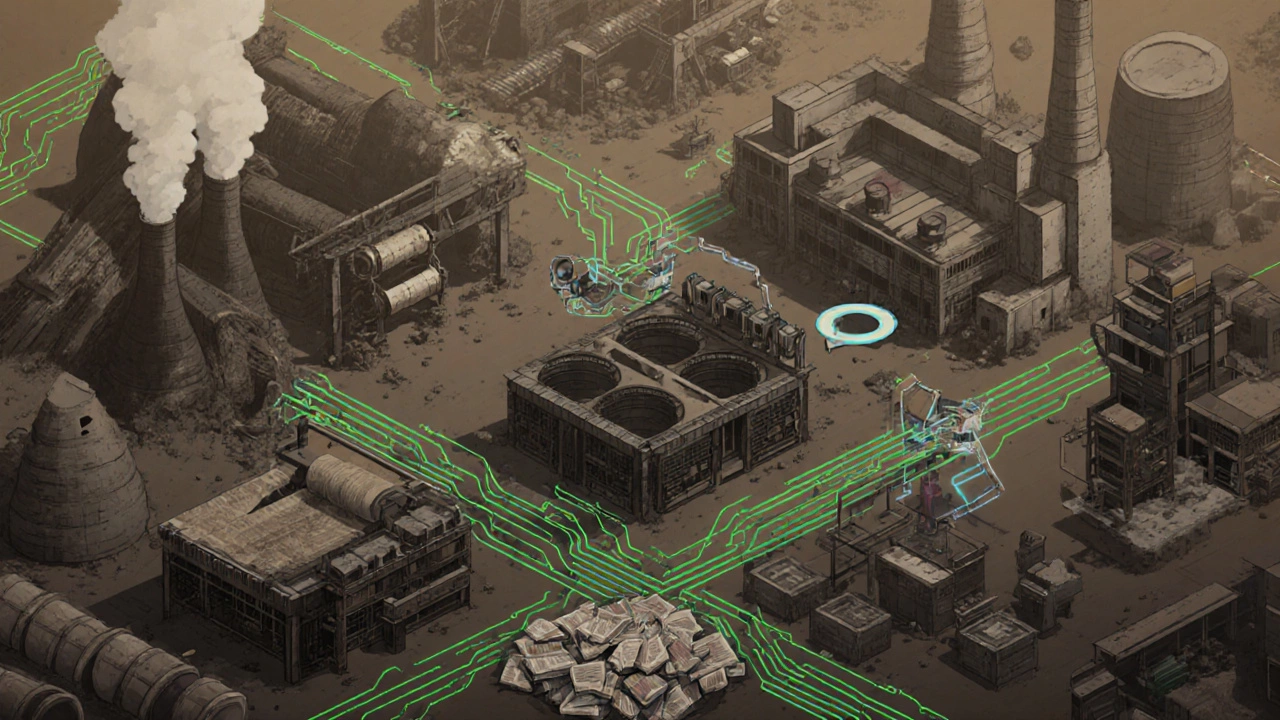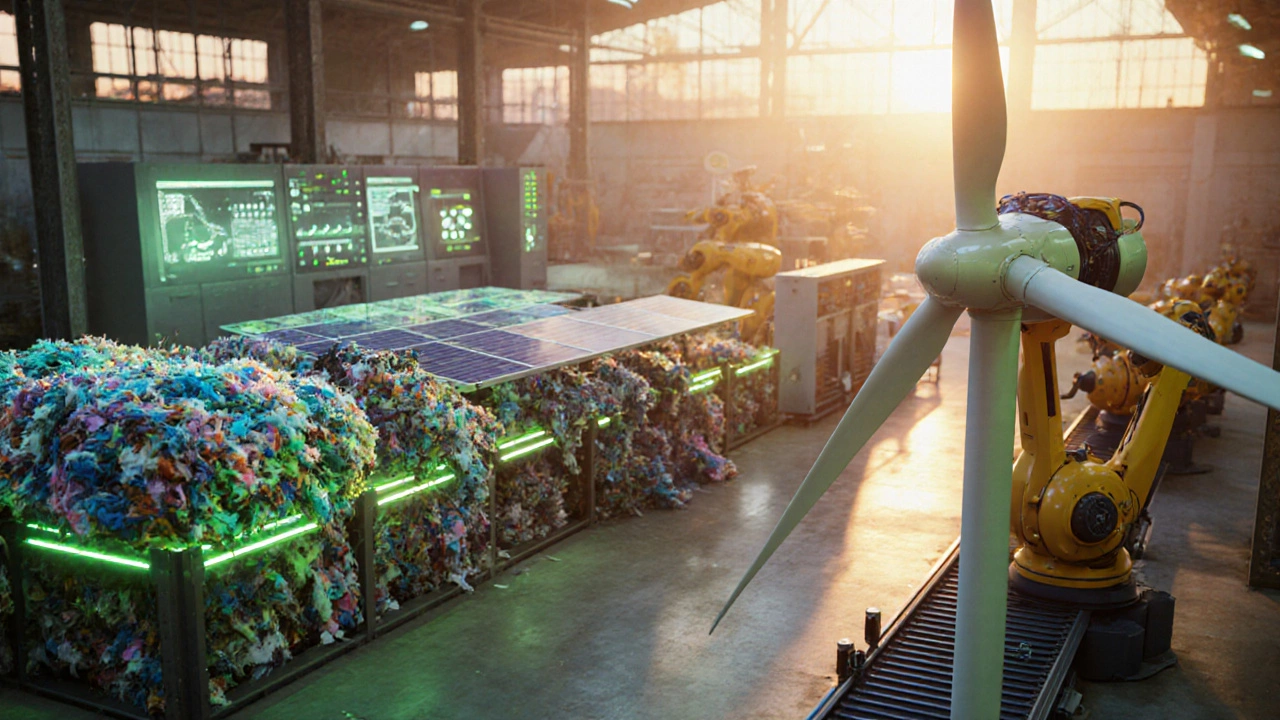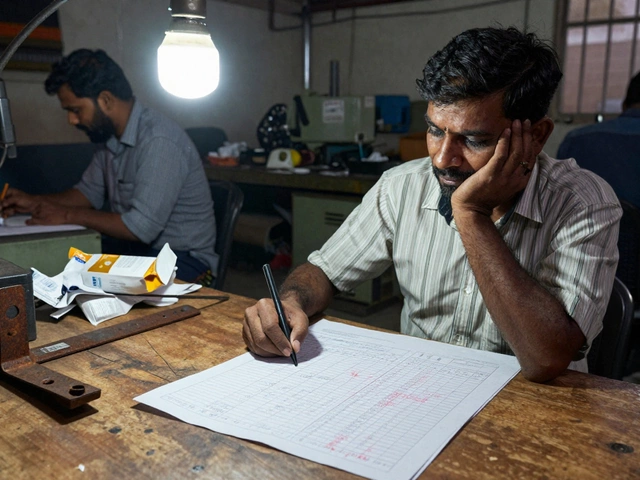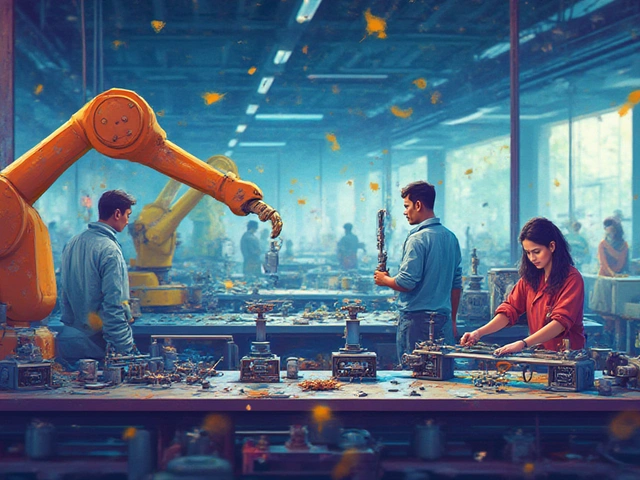Manufacturing Industry Risk Calculator
This tool evaluates your manufacturing industry's risk of disappearing within 15 years based on the five key warning signs discussed in the article.
How much labor cost could be reduced by automation/AI in < 10 years?
How severe are new environmental or material restrictions?
Decline in demand for your product category?
How dependent is your production on scarce or risky materials?
How difficult is it to recruit workers for your industry?
Enter your values and click Calculate to see your industry's risk assessment
Ever wondered which sector of manufacturing might vanish before you retire? With rapid tech shifts, tighter sustainability rules, and global labor dynamics, several once‑steady industries are on thin ice. This guide breaks down the warning signs, names the biggest at‑risk sectors, and shows you how to future‑proof your business ideas.
Spotting the Red Flags of a Fading Industry
When a market starts wobbling, a handful of metrics turn red. Below are the most reliable signals that an industry is headed for extinction within a 15‑year window.
- Technology adoption rate - If automation or AI can shave more than 30 % of labor costs in less than a decade, the human‑intensive model becomes unsustainable.
- Regulatory pressure - New carbon caps, waste‑reduction mandates, or bans on specific materials can cripple production lines overnight.
- Consumer preference shift - A sustained drop of 20 % or more in demand for a product category signals a cultural pivot.
- Supply‑chain fragility - Heavy reliance on single‑source raw materials that are becoming scarce or politically risky.
- Talent pipeline erosion - When younger workers shun an industry, recruitment costs skyrocket and expertise drains.
These factors often overlap. For example, Automation is the use of machines, control systems, and information technologies to reduce human labor in production not only cuts costs but also accelerates regulatory compliance by standardising emissions.
Industries Most Likely to Vanish by 2040
Based on the signals above, analysts converge on a short list of manufacturing sectors that could disappear or shrink dramatically in the next fifteen years.
- Coal Mining is the extraction of coal for energy production, a carbon‑intensive activity facing global phase‑out policies. With governments pledging net‑zero targets, demand for coal is projected to drop below 5 % of today’s levels by 2035.
- Traditional Textile Manufacturing is large‑scale production of garments using water‑intensive, chemical‑heavy processes. Sustainable fabrics and on‑demand printing are eroding its cost advantage.
- Single‑Use Plastic Manufacturing is the creation of disposable plastic products, increasingly banned in Europe and North America. Alternatives like biodegradable polymers are gaining market share.
- Print Media Presses is the industrial equipment that produces newspapers and magazines, suffering from digital migration. Circulation drops of 80 % in the last decade forecast a near‑total shutdown.
- Low‑Skill Assembly Lines is manual assembly operations that can be replicated by collaborative robots (cobots). AI‑driven visual inspection and robotic gripping make human workers redundant.

Key Disruptors Driving the Change
Understanding the forces behind these declines helps you anticipate the next wave of upheaval.
| Industry | Primary Disruption | Risk of Disappearance (0‑100%) | Projected Timeline |
|---|---|---|---|
| Coal Mining | Renewable Energy Adoption | 90 | 2028‑2035 |
| Traditional Textile | Circular Economy & Sustainable Fabrics | 75 | 2030‑2040 |
| Single‑Use Plastic | Regulatory Bans & Biodegradable Alternatives | 80 | 2027‑2033 |
| Print Media Presses | Digital Content Consumption | 85 | 2026‑2032 |
| Low‑Skill Assembly | Artificial Intelligence & Robotics | 70 | 2030‑2038 |
Notice how Artificial Intelligence is the simulation of human intelligence processes by machines, enabling predictive analytics, autonomous decision‑making, and advanced robotics appears as a common thread across multiple sectors. Companies that fail to embed AI risk becoming obsolete.

Checklist for Entrepreneurs: Pivot Before the Collapse
If you’re running or planning a manufacturing venture, use this quick‑fire list to see whether you need to pivot.
- Map your product’s carbon footprint. If it exceeds emerging EU thresholds, start researching low‑emission alternatives.
- Audit your labor mix. If more than 40 % of your workforce performs repetitive tasks, calculate the ROI of cobots.
- Evaluate raw material sources. Dependence on commodities with volatile geopolitical risk (e.g., rare earths, coal) calls for diversification.
- Test demand elasticity. Run a small‑scale market survey to see if customers would switch to a recycled or digital version of your offering.
- Identify adjacent high‑growth niches-such as Additive Manufacturing is the process of building objects layer‑by‑layer using 3‑D printing technology, allowing customization and material efficiency-and develop a prototype within 12 months.
Checking these boxes now can save you from a costly overhaul later.

Emerging Opportunities to Replace the Lost Industries
When one sector shrinks, another rises. Below are the most promising areas to channel your capital and expertise.
- Renewable Energy Components - Manufacturing of wind‑turbine blades, solar‑panel frames, and battery casings is projected to grow 12 % CAGR through 2035.
- Circular‑Economy Services - Companies that refurbish, remanufacture, or up‑cycle waste materials (e.g., textile waste turned into insulation) are seeing 20‑30 % profit margins.
- Smart‑Factory Solutions - Integrating sensors, edge computing, and AI to optimise production lines can boost efficiency by up to 25 %.
- Biodegradable Polymer Production - Start‑ups using plant‑based feedstocks to replace single‑use plastics are attracting $2 billion in VC funding each year.
- Localized, On‑Demand Printing - Digital textile printers and 3‑D fabric printers enable custom designs with virtually no waste, catering to fast‑fashion’s backlash.
By aligning with these trends, you not only dodge obsolescence but also tap into manufacturing industry decline as a catalyst for growth.
Practical Steps to Future‑Proof Your Business
- Invest in Robotics is mechanical devices programmed to perform tasks autonomously or semi‑autonomously in industrial settings that can be retrofitted onto existing lines.
- Shift R&D budget toward low‑carbon materials and modular design.
- Build a data‑analytics team that can predict demand swings using AI‑driven forecasting.
- Form partnerships with recycling firms to create a closed‑loop supply chain.
- Establish a rapid‑prototype lab for testing new product concepts every quarter.
Even a modest commitment-say, 5 % of revenue-to these actions can keep you ahead of the curve.
What signs indicate my manufacturing sector is at risk?
Look for rapid tech adoption that can replace labor, tightening environmental regulations, falling consumer demand, fragile supply chains, and a dwindling talent pool. When three or more of these appear together, the sector is likely on a decline trajectory.
Why is coal mining expected to disappear?
Global climate accords set net‑zero targets that force governments to phase out coal‑fired power plants. Renewable energy costs have dropped below $0.03 per kWh, making coal uneconomical. Investment in new coal mines has plummeted, and many companies are already closing operations.
Can traditional textile manufacturers survive?
Survival hinges on adopting sustainable fibers, water‑less dyeing tech, and digital printing. Those that stay locked into water‑intensive, chemical‑heavy processes face bans in key markets like the EU and China.
How quickly can a small factory adopt robotics?
A modular cobot system can be installed in 4‑6 weeks and integrated with existing PLCs in 2‑3 months. Training staff on robot safety takes another month, making a full rollout feasible within a six‑month fiscal year.
What high‑growth niches should I explore?
Focus on renewable‑energy components, circular‑economy services, smart‑factory software, biodegradable polymers, and on‑demand digital printing. These areas align with sustainability mandates and show strong capital inflows.






